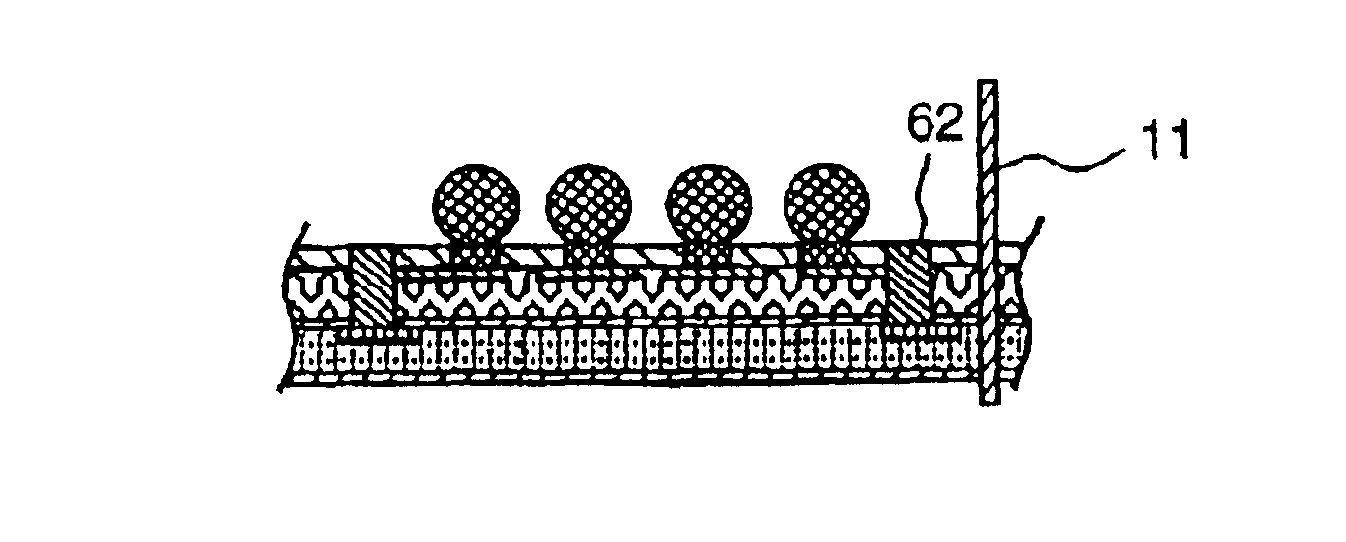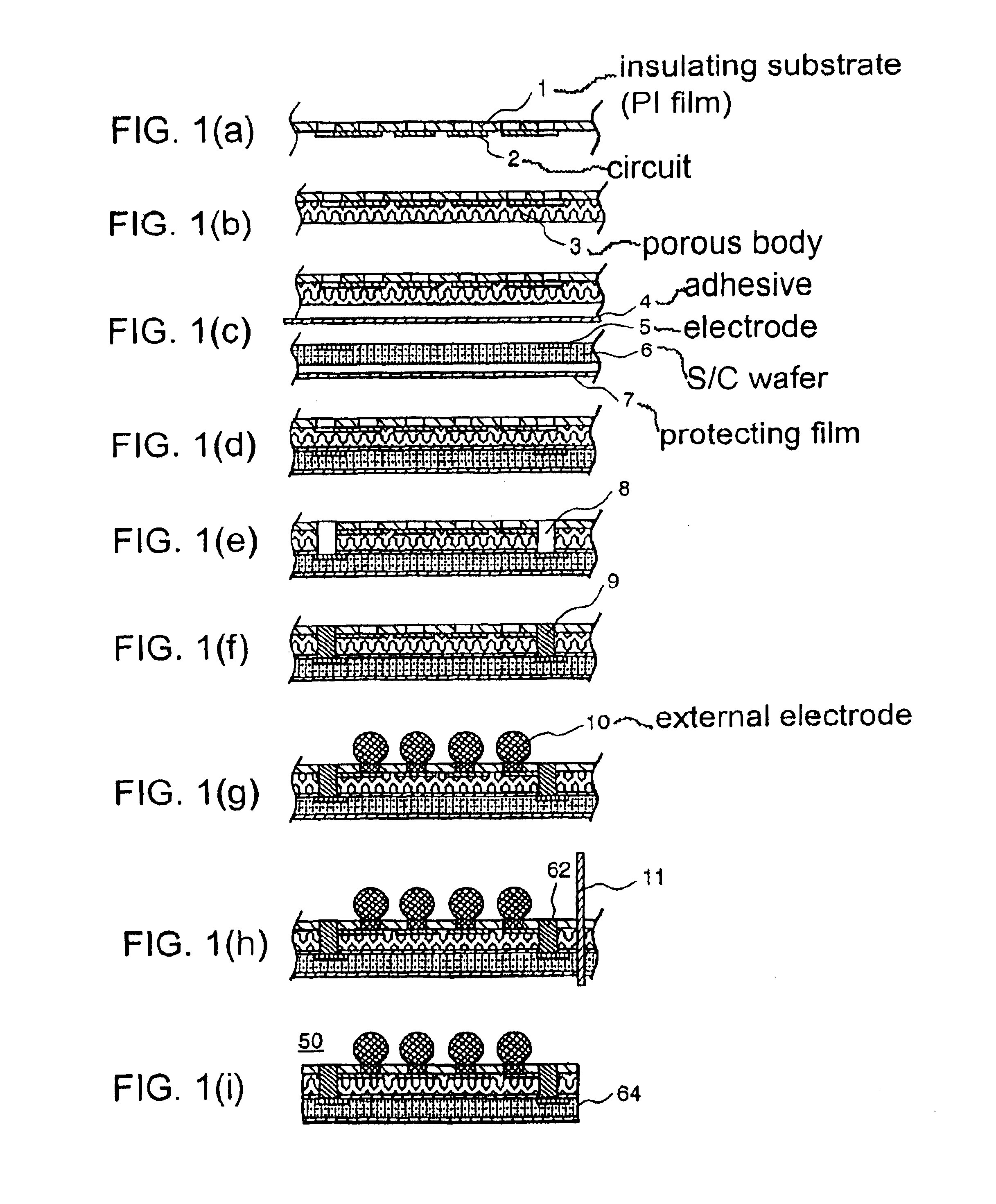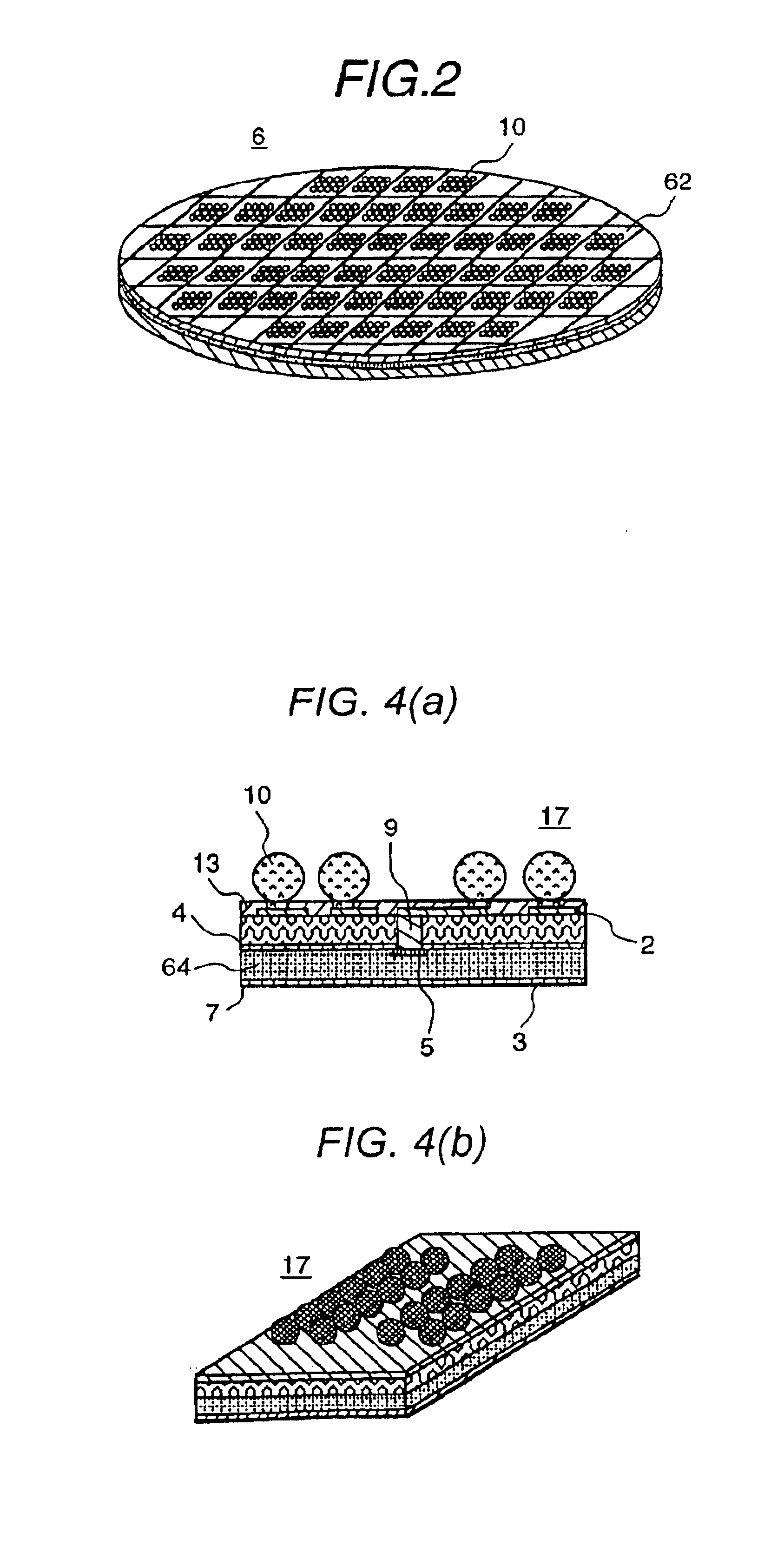Semiconductor device, semiconductor wafer, semiconductor module, and a method of manufacturing semiconductor device
a semiconductor and semiconductor technology, applied in the direction of semiconductor devices, semiconductor/solid-state device details, electrical apparatus, etc., can solve the problems of difficult surface implementation, thin and easily deformed self, and inability to implement qfp, etc., to achieve the effect of high reliability and preferable mass production
- Summary
- Abstract
- Description
- Claims
- Application Information
AI Technical Summary
Benefits of technology
Problems solved by technology
Method used
Image
Examples
embodiment 1
(Embodiment 1)
[0047]FIGS. 1(a) to 1(i) illustrate steps in the manufacture of a semiconductor device representing an embodiment of the present invention, and a semiconductor device obtained by the manufacturing steps is shown in FIG. 1(i).
[0048]In accordance with the manufacturing steps of FIGS. 1(a)-1(i), the semiconductor wafer and the semiconductor device of the present invention were prepared.
[0049]In the step of FIG. 1(a), a polyimide film (UB rex S: made by Ube Kosan Co.) 50 μm thick, whereon an epoxy group adhesive agent was applied, was used as the insulating substrate 1. Device holes were formed by punching in the insulating substrate 1. Electrolytic copper foil 18 μm thick was adhered to the polyimide film by heating and pressurizing with a roller at 150° C. After applying photosensitive resist (P-RS300S: made by Tokyo Ohka Co.) onto the electrolytic copper foil, it was baked at 90° C. for 30 minutes, and an etching mask was prepared by exposing and developing a pattern.
[0...
embodiment 2
(Embodiment 2)
[0063]FIGS. 3(a) to 3(h) show steps in the manufacture of a semiconductor device representing another embodiment of the present invention, and a semiconductor device obtained by the manufacturing steps as shown in FIG. 3(h).
[0064]In accordance with the manufacturing steps of FIGS. 3(a)-3(h), the semiconductor wafer 6 and the semiconductor device 17 of the present invention were prepared.
[0065]In the step of FIG. 3(a), a porous body 3 made of polytetrafluoroethylene having a three dimensional network structure of 150 μm, which was prepared by a drawing method, the adhesive agent 4, the semiconductor wafer 8, and the wafer protecting film 7 were arranged as indicated. A semiconductor wafer 8, which was 4 inches in diameter and 525 μm in thickness, was used. The adhesive agent 4 and the wafer protecting film 7 were prepared by impregnating the adhesive varnish containing non-volatile component 35% (biphenyl type epoxy resin (YX-4000: made by Yuka Shell Co.) was dissolved ...
embodiment 3
(Embodiment 3)
[0076]FIG. 4(a) and FIG. 4(b) show a cross sectional view and a perspective view, respectively, of a semiconductor device representing another embodiment of the present invention. The semiconductor device was obtained by the following manufacturing steps.
[0077]After forming the via-holes by the same process as the embodiment 2, copper film was formed on the inner wall of the via-holes and the surface of the porous body by a vacuum deposition method. The subsequent processes were the same as used in the previous embodiment to manufacture the semiconductor wafer 6 and the semiconductor device 17.
[0078]The semiconductor device 17 was mounted on a mounting substrate, and a temperature cycle test in the range from −55° C. to −125° C. was performed. As the mounting substrate, a copper clad glass cloth base epoxy laminate FR-4 (MC-E-67: made by Hitachi Kasei Co.) was used. Furthermore, a reflow test at 240° C. for 5 seconds was performed after absorbing moisture in an environ...
PUM
 Login to View More
Login to View More Abstract
Description
Claims
Application Information
 Login to View More
Login to View More - R&D
- Intellectual Property
- Life Sciences
- Materials
- Tech Scout
- Unparalleled Data Quality
- Higher Quality Content
- 60% Fewer Hallucinations
Browse by: Latest US Patents, China's latest patents, Technical Efficacy Thesaurus, Application Domain, Technology Topic, Popular Technical Reports.
© 2025 PatSnap. All rights reserved.Legal|Privacy policy|Modern Slavery Act Transparency Statement|Sitemap|About US| Contact US: help@patsnap.com



